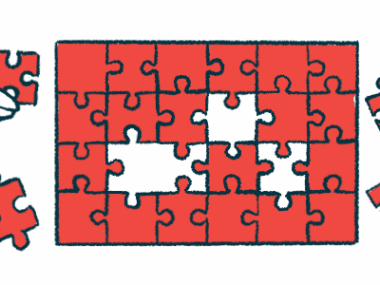Going to the Doctor Isn’t Always an Easy Decision
Written by |

Earlier today, I scheduled appointments for my husband and me to see our primary doctor and pulmonologist. I also rescheduled appointments with my cardiologist, neurologist, endocrinologist, and ophthalmologist, all of which I’d had to cancel recently because I was too sick to go to the doctor.
There really is such a thing as being too sick to go to the doctor, especially with a multisystem disease like sarcoidosis, and even more so with a handful of comorbidities. It generally happens when the systems are mixed: I may cancel an ophthalmology appointment while dealing with a stomach bug or skip a pulmonology appointment because of extreme fatigue.
I’ve also had to miss physical therapy often — sometimes for other conditions as described above, but more frequently because of severe joint pain and stiffness — when the effort to get there would harm me more than the therapy would help me. Between my broken foot last year and my back and hip this year, I’ve lost so much time in physical therapy, and along with it, any progress I’d made.
What’s ironic is that aside from all the routine checkups (and there are a lot), it’s often hard for me to know when or whether I should go to the doctor. For most healthy people, that’s a fairly simple decision, but for those of us living with sarcoidosis or other chronic illnesses, the answer isn’t as obvious.
Flu-like symptoms?
The most common symptoms of the standard flu include fever, chills, cough, sore throat, runny or stuffy nose, body aches, headaches, and fatigue. But sarcoidosis can cause every one of them.
COVID-19 symptoms include a few additions to that list, such as shortness of breath — another common symptom of sarcoidosis. Given the seriousness of the virus and the compromised immunity of many people living with sarcoidosis — due to the disease itself or the medication to treat it — this can be especially scary. Sitting in a crowded waiting room full of sick people at an urgent care center can expose us to the virus if we don’t already have it. But if we do have it, early diagnosis and treatment give us the best chance of recovery.
Severe pain?
For many people with sarcoidosis, pain is a given. We’re always in pain. It may vary in where it hurts, what type of pain (stabbing, shooting, aching, throbbing, etc.), or how severe, but it’s always there.
We’ve likely been working with our treatment team to manage this pain in a variety of ways. For me, that has included heat, ice, over-the-counter and prescription anti-inflammatories, steroids, muscle relaxers, opioids, cannabis, physical therapy, chiropractic, acupuncture, acupressure, transcutaneous electrical nerve stimulation (TENS), cupping, massage therapy, trigger point injections, Botox injections, joint injections, epidurals, and nerve blocks — and I’m still in pain every day.
There are times when it’s so severe that I probably should get medical intervention, but I still don’t go. Of course, I would love it if a doctor could take away my pain. But I’ve been working with four to five specialists trying countless treatments — both mainstream and alternative — for years. If they haven’t been able to do it yet, I don’t expect the on-call doctors in the clinic to have the answer, given they may have only read a paragraph about my rare disease in medical school, which could’ve been decades ago, and may never have seen a sarcoidosis patient.
Back when I was in college, before my sarcoidosis diagnosis, I once went to the emergency room for severe abdominal pain. My aunt, who lived nearby, met me there because my mother was at home recovering from surgery. The pain came in spurts so severe that I was doubled over and in tears. In between those spasms, my aunt made jokes to distract me. When the doctor saw me laughing, he decided I was faking.
Beyond that, I’ve heard so many stories from friends in the chronic illness community about being turned away, accused of being “drug-seeking.” I have a pretty high pain tolerance, so when it’s more than I can take, I really don’t want to go through the struggle of getting dressed and getting there and take the risk of being in that waiting room, only to be turned away.
To doc, or not to doc, that is the question
This is why I am so grateful for medical portals, at-home COVID-19 tests, and telehealth visits. They’re a middle step that helps determine whether it’s really worth that effort and risk for an in-person visit, or if I can stay safe at home while we address it through our computers. I recognize my privilege here, and just wish that technology were accessible to all who need it.
Note: Sarcoidosis News is strictly a news and information website about the disease. It does not provide medical advice, diagnosis, or treatment. This content is not intended to be a substitute for professional medical advice, diagnosis, or treatment. Always seek the advice of your physician or other qualified health provider with any questions you may have regarding a medical condition. Never disregard professional medical advice or delay in seeking it because of something you have read on this website. The opinions expressed in this column are not those of Sarcoidosis News or its parent company, Bionews, and are intended to spark discussion about issues pertaining to sarcoidosis.







Leave a comment
Fill in the required fields to post. Your email address will not be published.